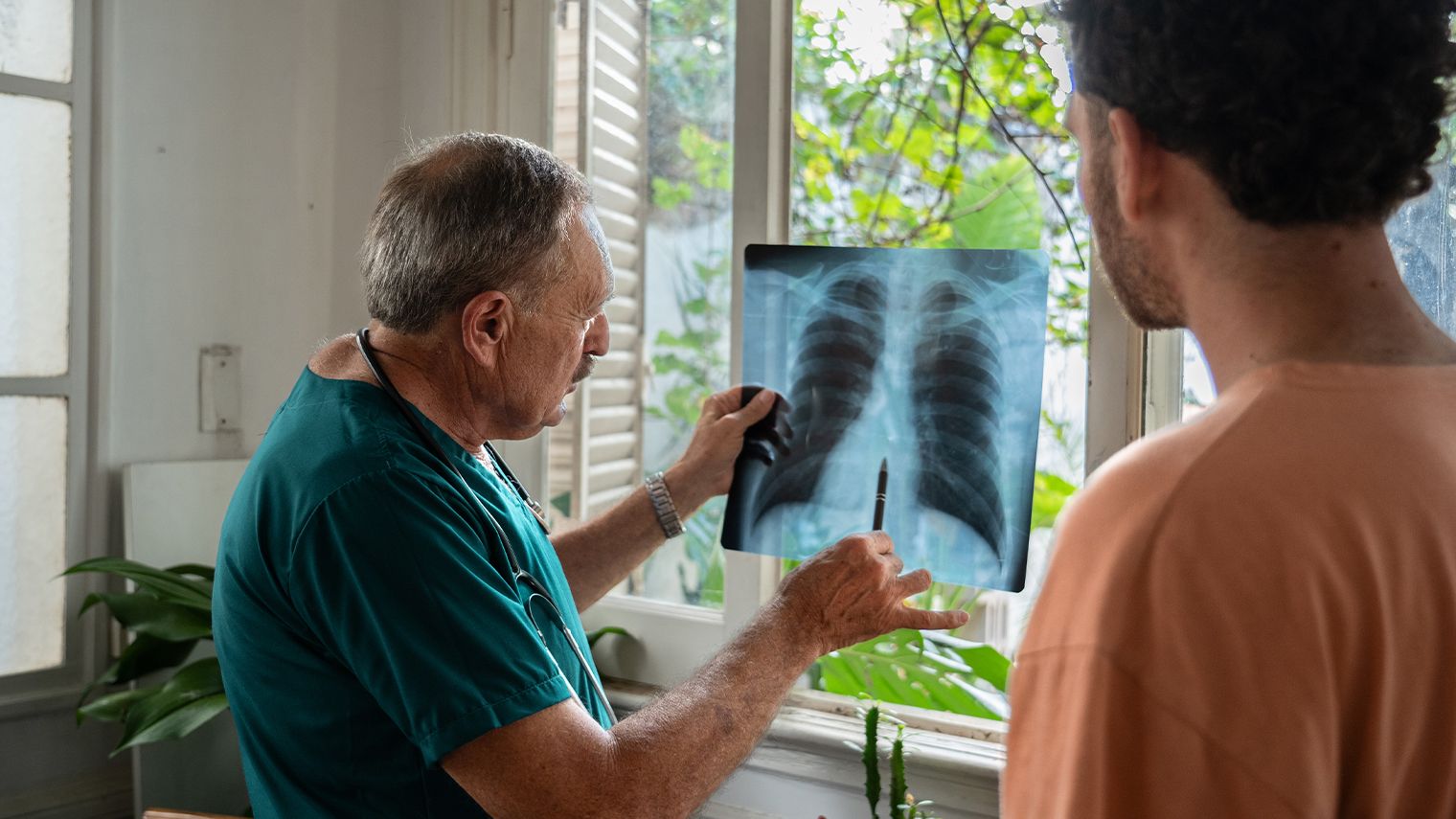What’s Alpha-1 Antitrypsin Deficiency, and What’s Its Link to COPD?
July 26, 2024
Content created for the Bezzy community and sponsored by our partners. Learn More

Photography by Frazao Studio Latino/Getty Images
This genetic condition might make your lungs more sensitive to damage. But there are ways to manage both this condition and COPD.
Childhood respiratory infections, environmental exposures, long-term exposure to smoking, and genetics can increase your risk of developing chronic obstructive pulmonary disease (COPD).
One genetic risk factor is alpha-1 antitrypsin deficiency (AATD), a condition that increases your chances of developing lung disease. And if you already have COPD, AATD can make it worse.


How are COPD and AATD connected?
Alpha-1 antitrypsin (AAT) is a protein that’s made in your liver and helps protect your lungs. If your body doesn’t have enough AAT, your lungs might be more sensitive to damage from smoking, childhood respiratory infections, poor air quality, and other environmental factors.
There are a few ways COPD and AATD are connected in their effects on lung health and breathing:
- If you don’t already have COPD, AATD may make you more likely to develop it.
- AATD leaves your lung tissue more vulnerable to damage. This can lead to progressive airflow issues and new or worsening COPD symptoms such as chronic cough, mucus, and shortness of breath.
- People with AATD tend to develop COPD at a younger age and experience quicker disease progression than people whose COPD is not related to lung damage from AATD.
What are the symptoms of AATD?
The symptoms of AATD, as laid out by the American Lung Association, are similar to those of COPD:
- shortness of breath
- chronic cough with mucus
- wheezing
- an inability to exercise as much as you could before
- tiredness or fatigue
- frequent lung infections such as cold and flu
If AATD affects your liver, you might have other symptoms as well.
How is AATD diagnosed?
Since AATD is genetic, your doctor may test you for it if you have a family history of lung or liver disease.
The 2024 Global Initiative for Chronic Obstructive Lung Disease report recommends testing for all people who have COPD or have a close family member with AATD. These tests might include:
- A chest X-ray or chest CT: These imaging tests may or may not show signs of lung inflammation, such as enlarged lungs, air pockets (bullae), or a flattened diaphragm. They’re usually more helpful in the later stages of the disease.
- A blood test or, sometimes, a cheek swab: This test can be used to check the levels of AAT in your blood. If your blood test shows a low number, you might have further tests for AATD.
- A genetic test: This is the most specific test and can confirm the results of a positive blood test. If you have a positive result, your doctor will find a mutation in the AAT gene. This is very specialized testing. You may need to talk with a genetic counselor to review your results.
- Pulmonary tests: Your care team may also recommend pulmonary tests, including:
- Spirometry: This test measures how much air you can blow out of your lungs and how fast you can do it. This usually involves blowing into a small portable machine.
- Peak expiratory flow test: This test measures how fast you can blow air out using maximal effort, usually using a small handheld device.
- Fractional exhaled nitric oxide test: This test measures the amount of nitric oxide in your breath. High levels might mean you have inflammation in your airways. This is usually done with a small portable device.
- Arterial blood gas test: This test involves taking a blood sample from an artery, usually in your wrist, to check the oxygen and carbon dioxide levels in your blood supply.
What’s the treatment for AATD?
The sooner the diagnosis is made, the better.
Your doctor might suggest a treatment that involves giving you donated AAT to increase the levels in your blood and protect your lungs from more damage. This long-term treatment, usually done weekly, won’t reverse the damage already done to your lungs but will slow the progression.
To improve your breathing and your daily life, your care team might also recommend:
- medications
- oxygen therapy
- lifestyle changes, such as quitting smoking and changing living environments or jobs to avoid exposures
- a pulmonary rehabilitation program
In the most severe cases, your care team will recommend a lung transplant.
Takeaway
AAT is a protein that’s made in your liver and helps protect your lungs. If you have AATD, it means there’s not enough AAT in your body. As a result, your lungs might be more sensitive to damage. But there are ways to treat both AATD and COPD.
Medically reviewed on July 26, 2024
3 Sources


Like the story? React, bookmark, or share below:
Have thoughts or suggestions about this article? Email us at article-feedback@bezzy.com.
About the author